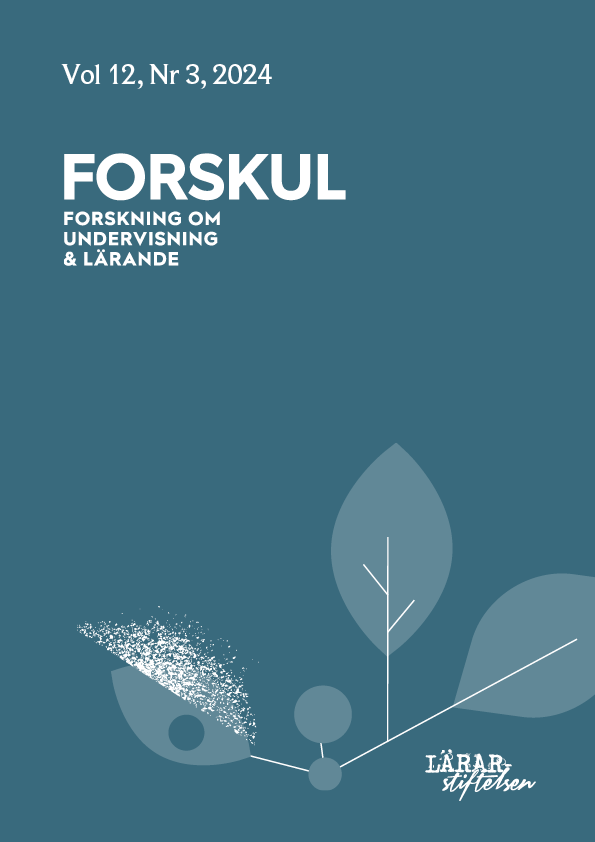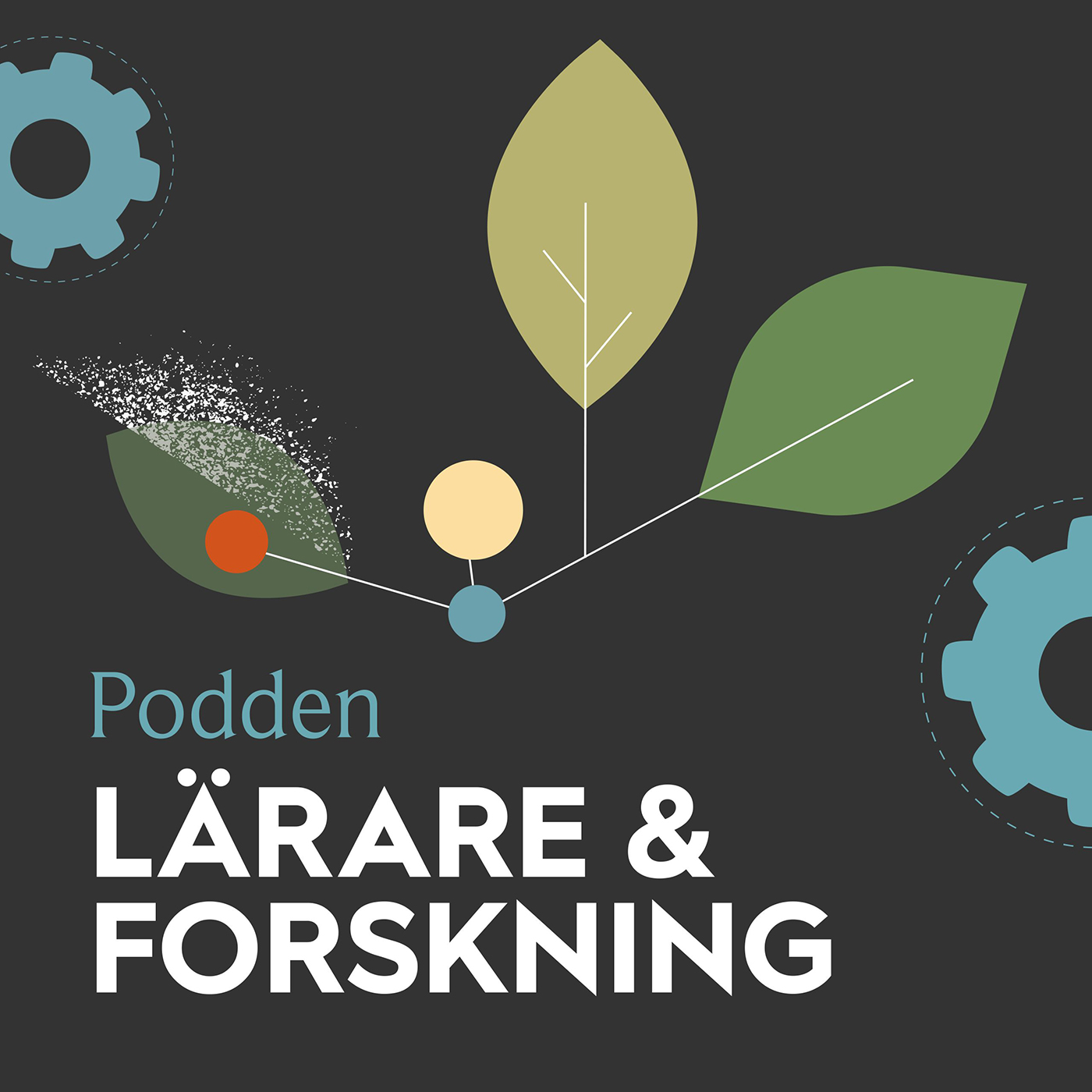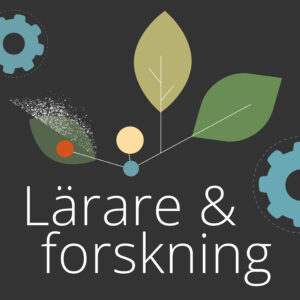Matematikundervisning i förskolan – toddlare urskiljer kardinalitet genom att spela lotto
DOI:
https://doi.org/10.61998/forskul.v12i3.26662Nyckelord:
matematik, toddlare, kardinalitet, spela spelAbstract
Denna artikel tar utgångspunkt i ett kombinerat forsknings- och utvecklingsprojekt som har bedrivits i samarbete mellan två forskare och tre förskollärare. Fokus i artikeln är hur ett lottospel, designat utifrån variationsteoretiska principer, kan göra det möjligt för toddlare (1–3 år) att urskilja kardinalitet som en grundläggande aspekt av tal. Utifrån analys av 195 videoinspelningar, där toddlare spelar lottospelet tillsammans med sin förskollärare, synliggörs dels hur de teoretiska utgångspunkterna för spelet realiseras i praktiken, dels vad matematikundervisning med förskolans yngsta kan innebära. Resultatet visar att lottospelets design möjliggör, men inte garanterar, att kardinalitet urskiljs av barnen. I vilken utsträckning kardinalitet urskiljs av barnen kan relateras till hur förskollärarna använder representationer och gester. Artikeln visar därmed på förskollärarens viktiga roll i tidig matematikundervisning.
Mathematics education in preschool - toddlers discerning cardinality when playing a lottery-game
This article is based on a combined research and development project, conducted in collaboration between two researchers and three preschool teachers. The focus of the article is on how a lottery game, designed on variation theory informed principles, can enable toddlers (1- to 3-year-olds) to discern cardinality as a fundamental aspect of numbers. Based on the analysis of 195 video recordings, where toddlers play the lottery game together with their preschool teacher, the results visualize how the theoretical principles for the game are realized and what mathematics education with toddlers may imply. The results show that the design of the lottery game enables, but cannot guarantee, that cardinality is discerned by the children. The extent to which cardinality is discerned by the children can be related to how the preschool teachers use representations and gestures. The article thus shows the important role of the preschool teacher in early mathematics education.
Referenser
Björklund, C., Ekdahl, A-L., Kullberg, A. & Reis, M. (2022). Preschoolers’ ways of experiencing numbers. LUMAT, 10(2), 84–110. https://doi.org/10.31129/LUMAT.10.2.1685
Björklund, C., Ekdahl, A-L. & Runesson Kempe, U. (2021). Implementing a structural approach in preschool number activities. Principles of an intervention program reflected in learning. Mathematical Thinking and Learning, 23(1), 72–94. https://doi.org/10.1080/10986065.2020.1756027
Björklund, C., Marton, F. & Kullberg, A. (2021). What is to be learnt? Critical aspects of elementary arithmetic skills. Educational Studies in Mathematics, 107(2), 261–284. https://doi.org/10.1007/s10649-021-10045-0
Björklund, C. & Palmér, H. (2019). I mötet mellan lekens frihet och undervisningens målorientering i förskolan. Forskning om undervisning och lärande, 7(1), 64–85. https://doi.org/10.61998/forskul.v7i1.27301
Björklund, C. & Palmér, H. (2022). Teaching toddlers the meaning of numbers - Connecting modes of mathematical representations in book reading. Educational Studies in Mathematics, 110(3), 525–544. https://doi.org/10.1007/s10649-022-10147-3
Björklund, C. & Palmér, H. (2024). The challenges of mathematizing in Swedish early childhood education. Journal of Early Childhood Education Research, 13(2), 167–186. https://doi.org/10.58955/jecer.138122
Bloom, P. & Wynn, K. (1997). Linguistic cues in the acquisition of number words. Journal of Child Language, 24, 511–533. https://doi.org/10.1017/s0305000997003188
Breive, S., Carlsen, M., Erfjord, I. & Hundeland, P.-S. (2018). Designing playful inquiry-based mathematical learning activities for kindergarten. I C. Benz, A. Steinweg, H. Gasteiger, P. Schöner, H. Vollmuth & J. Zöllner (Red.), Mathematics education in the early years. Results from the POEM3 conference, 2016. Springer. https://doi.org/10.1007/978-3-319-78220-1
Duncan, G. J., Dowsett, C. J., Claessens, A., Magnuson, K., Huston, A. C., Klebanov, P., Pagani, L. S., Feinstein, L., Engel, M., Brooks-Gunn, J., Sexton, H., Duckworth, K. & Japel, C. (2007). School readiness and later achievement. Developmental Psychology, 43(6), 1428–1446. https://doi.org/10.1037/0012-1649.43.6.1428
Duval, R. (2006). A cognitive analysis of problems of comprehension in a learning of mathematics. Educational Studies in Mathematics, 61(1), 103–131. https://www.jstor.org/stable/25472062
English, L. D. & Mulligan. J. T. (2013). Perspectives on reconceptualizing early mathematics learning: Introduction. I L. D. English & J. T. Mulligan (Red.), Perspectives on reconceptualizing early mathematics learning (s. 1–4). Springer. https://doi.org/10.1007/978-94-007-6440-8_1
Fuson, K. C. (1992). Relationships between counting and cardinality from age 2 to age 8. I J. Bideaud, C. Meljac & J.-P. Fischer (Red.), Pathways to number: Children's developing numerical abilities (s. 127–149). Lawrence Erlbaum Associates, Inc.
Gelman, R. & Gallistel, C. (1978). The child’s understanding of number. Harvard University Press.
Gibson, D., Gunderson, E., Spaepen, E., Levine, S. & Goldin-Meadow, S. (2019). Number gestures predict learning of number words. Developmental Science, 22(3), e12791. https://doi-org.ezproxy.ub.gu.se/10.1111/desc.12791
Goldin, G. A. (2014). Gestures in Mathematics Education. I S. Lerman (Red.), Encyclopedia of Mathematics Education (s. 556–572). Springer. https://doi.org/10.1007/978-3-030-15789-0_100042
Goldin, G. & Shteingold, N. (2001). Systems of representations and the development of mathematical concepts. I F. R. Curcio (Red.), The roles of representation in school mathematics: 2001 yearbook (s. 1–23). National Council of Teachers of Mathematics.
Lesh, R. (1981). Applied mathematical problem solving. Educational Studies in Mathematics, 12(2), 235–264.
Marton, F. (2015). Necessary conditions of learning. Routledge. https://doi.org/10.4324/9781315816876
McMullen, J., Verschaffel, L. & Hannula-Sormunen, M. (2020). Spontaneous mathematical focusing tendencies in mathematical development. Mathematical Thinking and Learning, 22(4), 249–257. https://doi.org/10.1080/10986065.2020.1818466
McNeill, D. (2005). Gesture and thought. University of Chicago Press. https://doi.org/10.7208/chicago/9780226514642.001.0001
Perry, B. & Dockett, S. (2008). Young children’s access to powerful mathematical ideas. I L. D. English (Red.), Handbook of international research in mathematics education (s. 75–108). Routledge. https://doi.org/10.4324/9780203930236
Pramling Samuelsson, I. & Asplund Carlsson, M. (2008). The playing learning child: Towards a pedagogy of early childhood. Scandinavian Journal of Educational Research, 52(6), 623–641. https://doi.org/10.1080/00313830802497265
Pramling Samuelsson, I. & Pramling, N. (2013). Orchestrating and studying children’s and teachers’ learning: Reflections on developmental research approaches. Educational Inquiry, 4(3), 519–536. https://doi.org/10.3402/edui.v4i3.22624
Ping, R. M. & Goldin-Meadow, S. (2008). Hands in the air: Using ungrounded iconic gestures to teach children conservation of quantity. Developmental Psychology, 44(5), 1277–1287. https://doi.org/10.1037/0012-1649.44.5.1277
Pitta-Pantazi, D., Christou, C. & Pittalis, P. (2014). Number teaching and learning. I S. Lerman (Red.), Encyclopedia of mathematics education (s. 645–654). Springer. https://doi.org/10.1007/978-3-030-15789-0_122
Radford, L. (2003). Gestures, speech, and the sprouting of signs: A semiotic-cultural approach to students’ types of generalization. Mathematical Thinking and Learning, 5(1), 37–70. https://doi.org/10.1207/S15327833MTL0501_02
Robutti, O. (2014). Gestures in Mathematics Education. I S. Lerman (Red.), Encyclopedia of Mathematics Education (s. 311–315). Springer. https://doi.org/10.1007/978-3-030-15789-0_100042
Sarnecka, B. W. & Carey, S. (2008). How counting represents number: What children must learn and when they learn it. Cognition, 108, 662–674. https://doi.org/10.1016/j.cognition.2008.05.007
Sarnecka, B., Kamenskaya, V. G., Yamana, Y., Ogura, T. & Yudovina, J. B. (2007). From grammatical number to exact numbers: Early meanings of ‘one’, ‘two’, and ‘three’ in English, Russian, and Japanese. Cognitive Psychology, 55, 136–168. https://doi.org/10.1016/j.cogpsych.2006.09.001
SFS 2010:800. Skollagen.
Skolverket. (2018). Läroplan för förskolan. Lpfö18.
Sundsdal, E. & Øksnes, M. (2015). Til forsvar for barns spontane lek. Nordisk tidskrift for pedagogikk og kritikk, 1, 1–11. https://doi.org/10.17585/ntpk.v1.89
Skolinspektionen. (2017). Förskolans kvalitet och måluppfyllelse.
Valenzeno, L., Alibali, M. W. & Klatzky, R. L. (2003). Teachers’ gestures facilitate students’ learning: A lesson in symmetry. Contemporary Educational Psychology, 28(2), 187–204. https://doi.org/10.1016/S0361-476X(02)00007-3
Van Oers, B. (2010). Emergent mathematical thinking in the context of play. Educational Studies in Mathematics, 74(1), 23–37. https://doi.org/10.1007/s10649-009-9225-x
Vogt, F., Hauser, B., Stebler, R., Rechsteiner, K. & Urech, C. (2018). Learning through play – pedagogy ad learning outcomes in early childhood mathematics. European Early Childhood Education Research Journal, 26(4), 589–603. https://doi.org/10.1080/1350293X.2018.1487160
Wynn, K. (1990). Children’s understanding of counting. Cognition, 36(2), 155–193. https://doi.org/10.1016/0010-0277(90)90003-3
Wynn, K. (1992). Children's acquisition of the number words and the counting system. Cognitive Psychology, 24(2), 220–251. https://doi.org/10.1016/0010-0285(92)90008-P
Publicerad
Referera så här
Licens
Copyright (c) 2024 Hanna Palmér, Camilla Björklund, Lena Landgren

Det här verket är licensierat under en Creative Commons Erkännande 4.0 Internationell-licens.
Författare till innehåll publicerat i Forskul behåller upphovsrätten till sina verk. Artiklar publiceras under villkoren i en Creative Commons-licens CC BY, som tillåter användning, nedladdning, distribution, länkning till och reproduktion i vilket medium som helst, förutsatt att originalverket är korrekt citerat.






